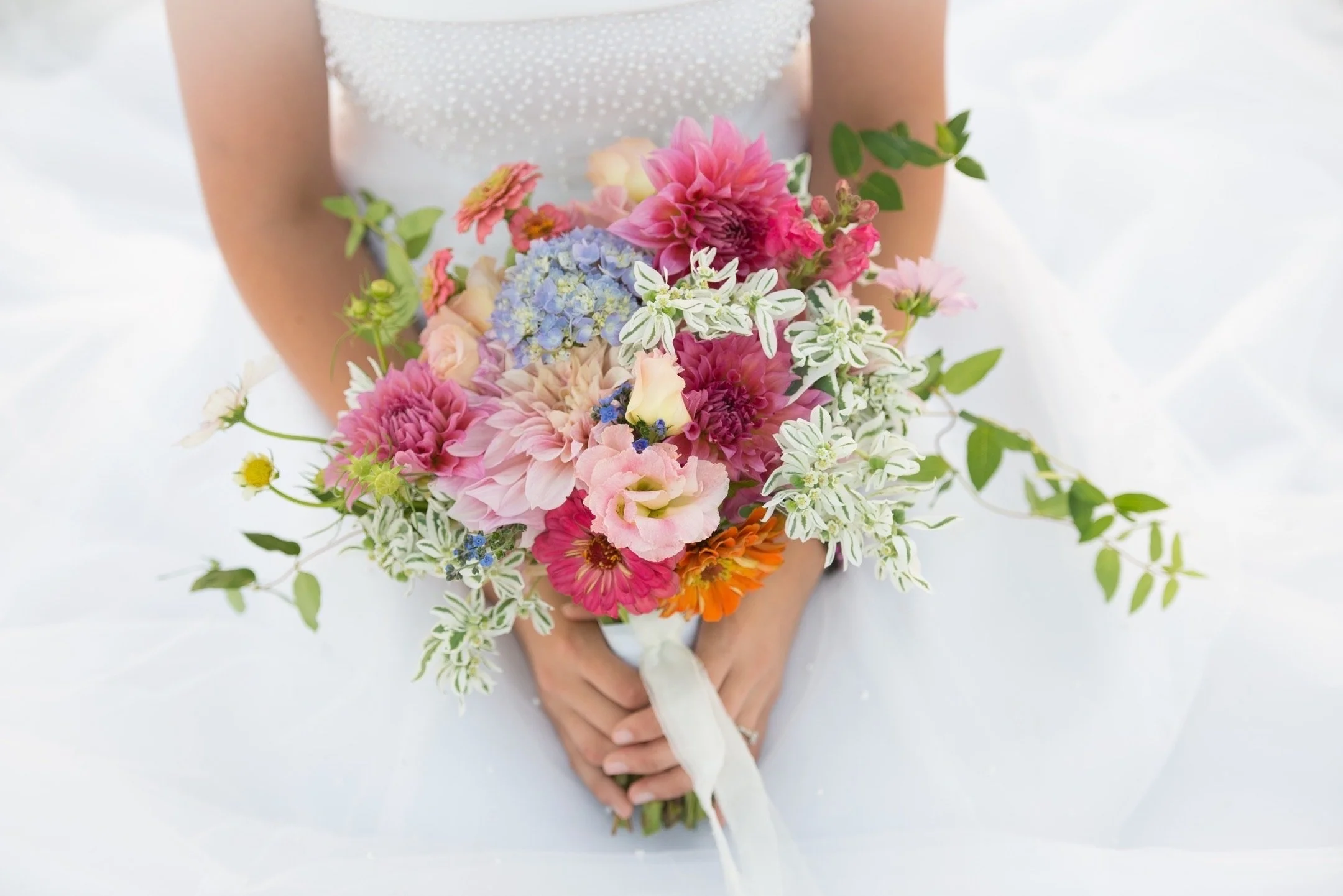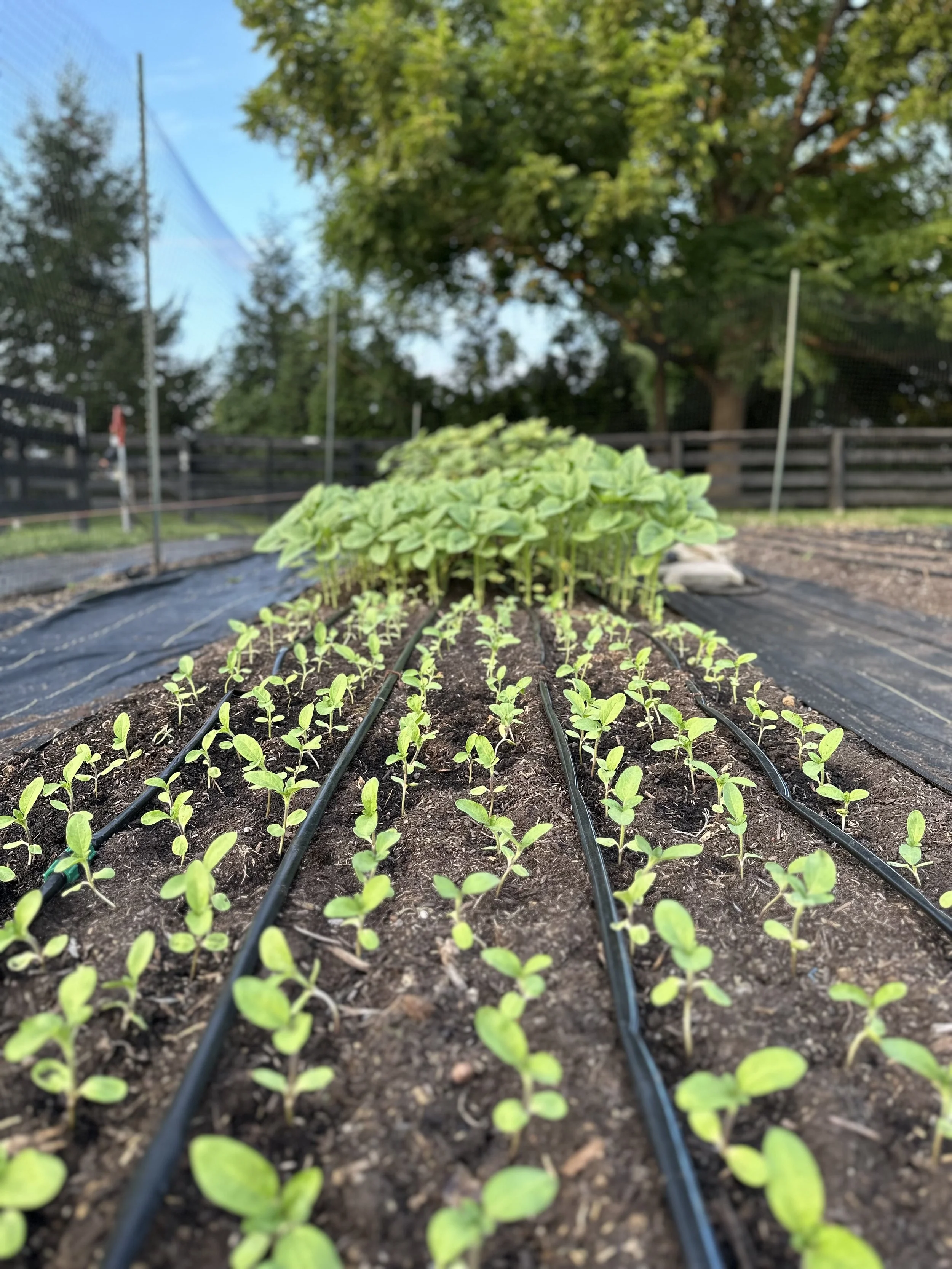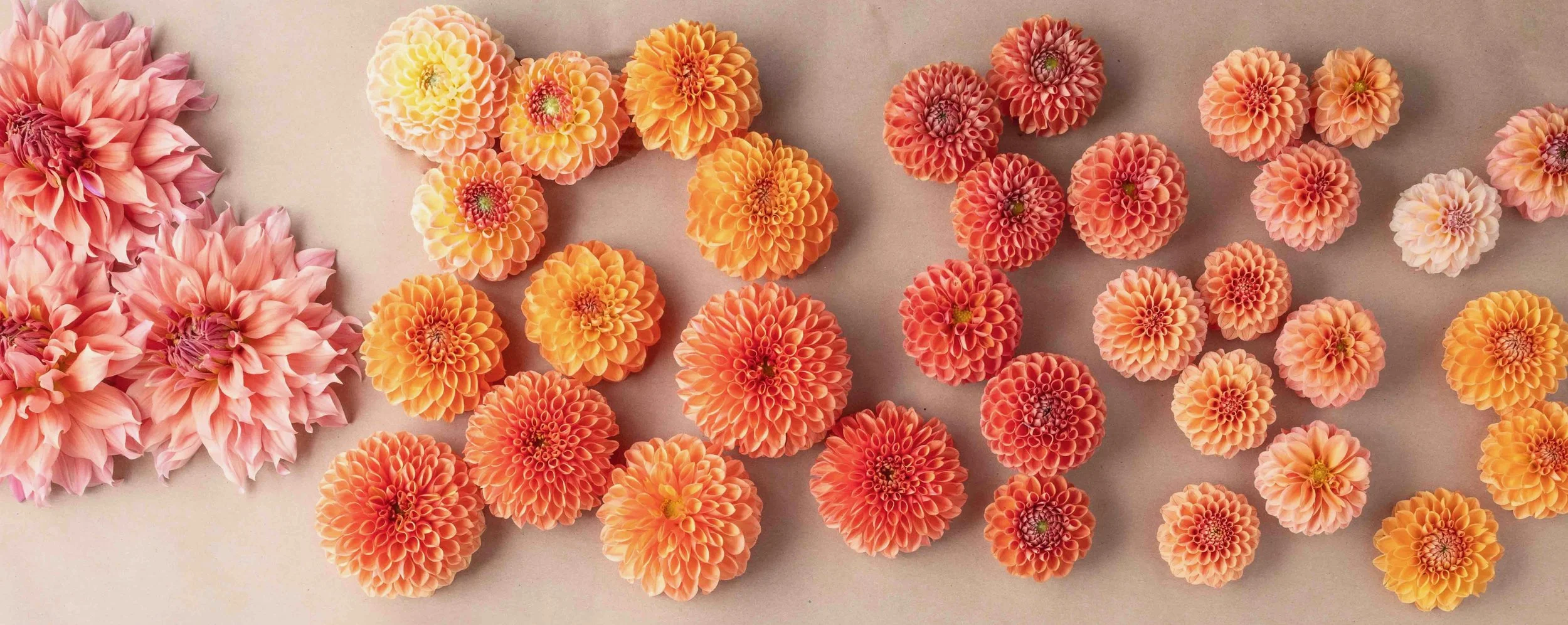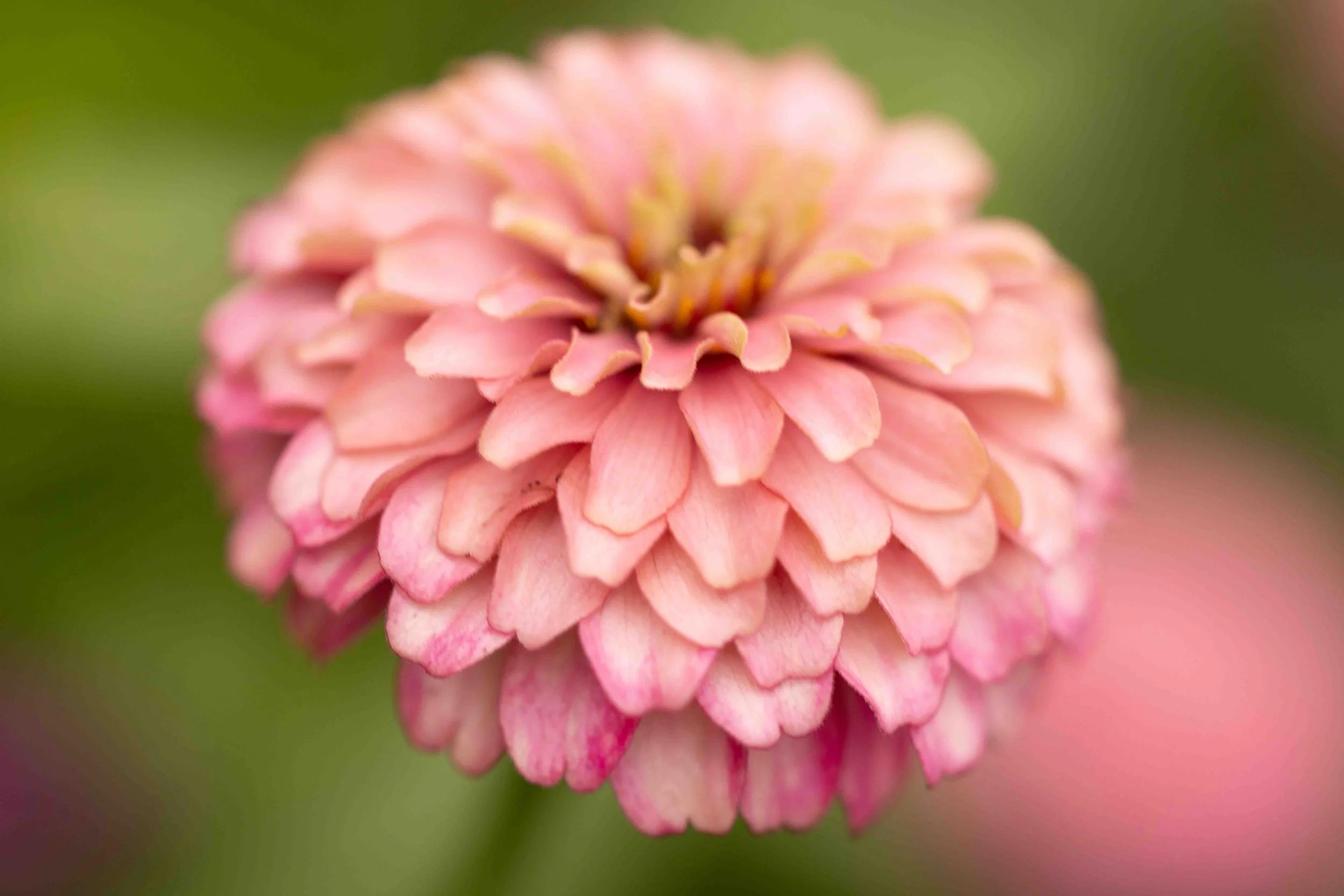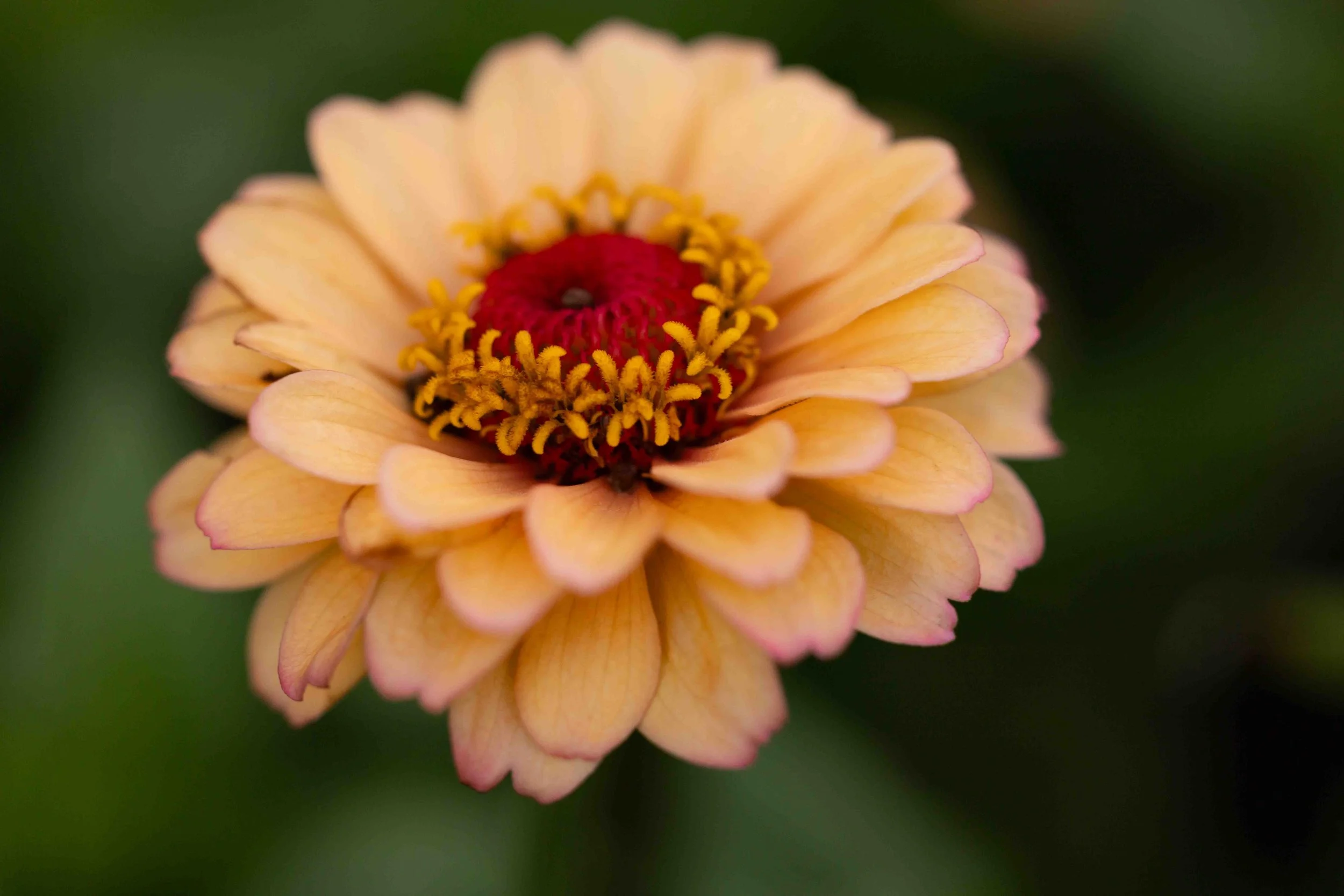Don’t Let Pinterest Pick Your Plant List
Why “Top 10” Lists Can Lead You Astray
It happens every season: you scroll through Pinterest or Instagram and see well-meaning “Top 10 Flowers to Grow” lists that promise foolproof blooms and guaranteed sales. The problem? They rarely answer the critical question: what are you growing them for? Without that clarity, your chances of ending up with flowers you can’t sell goes up dramatically.
A flower that shines in one revenue stream may flop in another. Take the current trend with so-called “brown” flowers, such as Belle Époque tulips or those cappuccino-hued Rosanne Brown lisianthus. Not long ago, only high-end florists with fashion-forward clients wanted them. Now, muted palettes grounded in these shades—reminiscent of precious metals—are becoming increasingly popular with brides. But try tucking brown flowers into a farmers market bouquet or offering them at a you-pick, and they’ll more than likely sit untouched.
Growing without a clear sales strategy doesn’t just lead to wasted stems—it creates stress, burnout, and low profitability. This blog is about shifting your thinking so you don’t just grow gorgeous flowers—you grow with purpose and greatly reduce your volume of unsold stems.
Examples of Why Market Matters
Some flowers simply don’t fit every channel, no matter how beautiful they are. Here are just a few examples (in addition to the content in this blog, we’re putting together a list of the top “do and don’t plant" varieties by revenue stream. If you don’t want to miss it, make sure you’re on our email list!)
Digitalis (foxglove): A dramatic, towering flower that shines in weddings and event work, especially in large installations where its height is an asset. But those same tall spikes make it impractical for mixed bouquets, and its high toxicity means it’s not a customer-friendly choice for farmers market stems.
Euphorbia: A unique filler that wedding designers prize for its airy texture. Still, it comes with a major caveat: its sap can be highly irritating, and when customers re-cut stems at home that risk is real. For that reason, euphorbia is best reserved for professional floral work rather than casual market bouquets or you-picks.
Limelight hydrangeas and snowball viburnum: Both can create instant impact—just a few stems can fill an urn or transform a wedding installation. But their oversized blooms (limelights) and floppy heads (snowballs) make them poor fits for mixed market bouquets, where scale and structure need to be more restrained.
With it’s highly variegated, almost white leaves, “Snow on the Mountain” euphorbia (left and middle photos) is one of my favorite flowers to use in wedding work. But it drips a milky sap every time its stems are snipped—which can be highly irritating to skin—and so we keep it away from uses where customers might cut it, such as market bouquets or you-picks. Foxglove (right) is similarly limited to wedding work, for us, due to its huge proportions and high toxicity.
How Color Choices Shape Sales Success
Color is often treated as a matter of personal taste, but in flower farming it’s a strategic decision. The same stem that flies off the table at a farmers market might end up in the compost pile if it doesn’t match what a wedding florist needs.
Farmers Markets, Subscriptions & Farmstands. The myth? Only bright, neon colors sell. The truth? It depends on your farm’s aesthetic and your customers. Some customers love bold, vibrant mixes. But others—at least in our market—place a high value on softer, more refined palettes. The key is variety without chaos—providing flowers in color palettes that appeal to your audience while staying true to your brand identity.
On our farm, I was reminded of the value of variety when a team member gravitated toward a palette of blue-purple and burgundy. The first time she made one of these bouquets for market, I was skeptical that it would sell. But it did. In fact, we sold lots of those bouquets, week after week. It proved that color is deeply personal, and if every bouquet reflected only my preferences, we’d likely miss out on whole groups of customers.
Retail Florists. Here, vase life is king, and color preferences differ from florist to florist. But as a quick perusal of any big-box floral provider’s website will reveal, many of their offerings fall into the brighter, more vibrant realm. Your best bet is to work directly with the florists in your area, who will tell you what colors are of most use for them.
Weddings. Soft tones—creams, blushes, peach—still dominate, and white is always in demand for weddings. But color is making a comeback, and vibrant shades of pink, coral, yellow, and blue/purple are requested far more frequently than they used to be. In fall, burgundy and muted jewel tones are always popular.
Staying ahead of wedding color trends is critically important when making longer-term decisions about your crops, such as determining which perennials to plant, or which dahlias to start stocking up on. Reading bridal magazines, watching Pinterest trends, and following florists on social media (particularly those with clienteles associated with the fashion and influencer arenas) are great ways to get ahead of—or at least stay current with—trends in the wedding industry.
On-Farm Events. At workshops and you-picks, we’ve found that people gravitate to every palette imaginable—from quiet pastels to the loudest brights. If there is one color scheme that you rarely see you-pick customers gravitate towards, it’s monochromatic palettes. I think what happens is that most visitors to the farm tend to find sticking to only a single hue almost impossible, given the abundance of choices.
Takeaway: Color isn’t just a preference—it’s one of the most important business decisions you’ll make as a grower.
We grow far fewer white flowers (center) now that we aren’t doing as many large weddings. These days, because we are more focused on the creation of mixed bouquets, we grow lots of flowers with flexible coloration, like this “Doris Duke” dahlia, left. Since its petals contain hues ranging from peach to pink, and even fuschia (in the centers), they can be incorporated into many different color palettes. Mixes like the Queen series of zinnias (shown right, with a couple other varieties mixed in, too) churn out flowers that vary in coloration and form, making them highly adaptable to different uses, as well.
Sunflowers: Same Flower, Different Strategies
Sunflowers are a great example of a crop that plays a role in most revenue streams—but with very different expectations depending on the channel. Variety choice, spacing, and succession planting matter a lot.
Farmers Markets, Subscriptions & Farmstands. For mixed bouquets, you need flower heads that aren’t too big. A large-sized sunflower overpowers everything else in a bouquet and is unwieldy to incorporate. In addition, because sunflowers are such “bossy” flowers color-wise, if you put them in every single bouquet, you won't have much color variation in your bouquet offerings. If your business involves creating mixed bouquets, growing sunflower varieties that don’t get too huge, and planting them closely together to reduce the size of the flower heads, is critical.
It’s also important to produce a steady stream of blooms in just the right amount. A classic beginner’s mistake with sunflowers is to plant them such that you get one or just a few giant flushes. When that happens, you’ll be scrambling to sell them all one week, and then not have any just a short time later. Mastering succession planting with sunflowers is key to selling them successfully in mixed bouquets.
Giant-headed sunflowers can have a place at markets. They’re a magnet for drawing people into your farmers market tent—especially if you have unusually colored varieties on display—and people are often interested in buying one or a few of them by the stem. But you don’t need a lot of them for these purposes.
Wholesale to Florists. Retail florists love sunflowers, but they need uniform, florist-friendly sizes and often value upward-facing blooms. That means precise cultivar selection and tight harvest timing. For wedding florists, demand is more niche (see below).
Weddings. Sunflowers are generally not a popular wedding flower, and you may never need a single sunflower stem for wedding work. However, when couples want them, they tend to want a lot of them. For that reason, if you have a wedding that features sunflowers, careful crop planning and pest protection (deer love to eat sunflower buds the night before you planned to harvest them) become critical. Getting the timing right is the trick; if they bloom too early or too late, you’ll have to purchase them from another grower
On-Farm Events. At you-picks, we’ve found sunflowers aren’t as popular as specialty crops like ranunculus or dahlias. Customers tend to gravitate towards varieties they can’t buy at the grocery store, and perhaps they also find the thick, abrasive stems off-putting to harvest.
For farms with the acreage for a sunflower field dedicated just to photo-ops (as opposed to producing cut flowers), however, these flowers can be a major draw. The classic golds and oranges (the classic colors) are crowd-pleasers when used for this purpose.
Takeaway: Sunflowers can work across several channels, but the right variety, size, and timing depend on your specific outlet.
To get sunflowers sized correctly for market bouquets (left)—meaning not too big—it helps to plant them very close together. We use 3” (~7.5 cm.) spacing when planting ours, and regular successions help ensure we have just the right amount, every single week (middle). Sunflowers aren’t a common request for weddings (though we get them—right photo), and so if you’re growing sunflowers that all need to be ready on a particular date, you’ll need to plan very carefully—or be prepared to buy them from another local grower.
Dahlias: Matching Flower Size to Market Fit
Dahlias are another crop with wide appeal, but again—the details matter. The right size, shape, and color make all the difference depending on whether you’re selling to markets, florists, or weddings.
Farmers Markets, Subscriptions & Farmstands. Here, mid-sized workhorses shine. We use varieties like Jowey Linda, Chrichton Honey, and All That Jazz as focal flowers, while slightly smaller varieties like Cornel, Ivanetti, and Doris Duke make excellent foundation flowers (see our Bouquet Blueprint™ resources to learn more about the system we use to develop our bouquets). Dinner-plate dahlias are usually too big for mixed bouquets, though varieties like Café au Lait can sometimes be coaxed into producing smaller heads that work well.
Weddings & Events. For weddings, the same mid-size blooms are essential, as they are an indispensable ingredient of bridal and bridesmaids bouquets and table centerpieces. But for big installations, giant dinner-plate dahlias are unbeatable. They anchor arbors, altars, and statement arrangements quickly and dramatically. Cafe au Lait and Sierra Glow offer versatility in wedding palettes, as they can be worked into a number of different color palettes. White dahlias are essential for growers focused on weddings, and burgundy is a must for fall.
Florists. The fact that dahlias do not ship well means they are in very high demand from local producers. Retail florists want reliable, mid-size dahlias. Wedding florists want both those and the big, dramatic blooms.
On-Farm Events. You-pickers love dahlias—and often the biggest ones they can find. Bold, saturated varieties like Café au Lait Royale (the pink version of Café au Lait), Lilac Time, and Spartacus are consistent favorites at our farm. But you’ll want to consider whether you want to limit access to these more labor-intensive plants (compared to zinnias and cosmos, for example) or charge higher prices for them. We do this on our farm by having special, dahlia-focused you-pick days in fall.
Takeaway: Dahlias are useful across almost all channels, but your mix of sizes and colors must be tailored to who you’re selling to.
Giant, “dinner plate” sized dahlias, like Sierra Glow, on the left (its blooms can easily measure 10” [25 cm.] across) are hugely useful in wedding work, where they can fill out an installation or ground a large focal arrangement. Dahlias for mixed bouquets, on the other hand, generally fall into the small or even miniature formal size classifications. We use blooms like “Crichton Honey” (leftmost, at the top, of all of the ball-shaped blooms) as Focal Flowers, and smaller blooms like “Cornel Bronze” and “Rose Toscano” (middle-right, above) as Foundation Flowers. Tiny pompom dahlias (none are shown in this photo) can even serve as Floater Flowers, when using the Bouquet Blueprint framework.
Zinnias: Reinventing a Classic Market Flower
Zinnias are another flower with crossover potential, and the shift in available varieties has completely changed their role in different sales channels.
Farmers Markets, Subscriptions & Farmstands. Zinnias have long been a staple of farmers markets; together with sunflowers they are often thought of as the quintessential market flowers of summer. But the zinnia landscape has changed dramatically in recent years. Gone are the days when Benary’s Giant zinnias were the only option for mixed bouquets. Newer cultivars now offer a far wider range of colors, shapes, and sizes, giving growers more tools to differentiate themselves. Zinnia series like Oklahoma, Queen, and many of the Floret releases are exceptionally useful as Foundation Flowers in mixed bouquets.
Weddings & Events. The revolution in zinnia cultivars may be having an even bigger impact on wedding florals. While many wedding florists once turned their noses up at zinnias because of their brash colors and association with backyard gardens or farmers markets, newer varieties with softer, gradated hues and unique forms are winning them over. These subtler zinnias can slip seamlessly into bridal palettes, making them worth serious consideration in a wedding-focused planting plan. The new “Ballerina” variety from Johnny’s Seeds is an obvious must-grow for weddings, with its multiple layers of petals in shades of blush, barely-there peach, or super soft pink.
Florists . Like dahlias, zinnias do not ship well, which makes them a crop where local growers can shine. Many retail florists already prize zinnias—including the brightly colored ones—for their vase life and cheerful character. Wedding florists are starting to show more interest as well, especially as awareness of the newer cultivars grows. Demand here is likely to keep increasing.
On-Farm Events. Zinnias might seem like a no-brainer for you-picks, thanks to their cut-and-come-again habit and vibrant colors. But because zinnias need to be harvested when fully mature to last in the vase, customers have to be taught to perform the "wiggle test" to ensure they don't pick flowers too early. This hands-on approach may not be practical for every you-pick operation.
Takeaway: Zinnias can work across nearly every revenue stream—but only if you’re strategic about variety and palette.
Thanks to zinnia breeding programs that have yielded a far broader range of colors than were available just a few years ago, I don’t think there is a revenue stream that zinnias don’t fit into. The trick, of course, is in growing the right varieties for your sales channel.
Conclusion: Know Before You Grow
Every major growing decision—what to plant, how much, how often to succession—should be driven by your intended sales channels. Without that clarity, even the best crops can end up unsold.
You certainly don’t need a massive farm or a massive planting list. What you do need is alignment between your crops and your customers. So before asking, “What should I grow this year?” ask first: “How am I selling my flowers?”
And if you’re not sure—or want to pressure-test the direction you’re heading—you’ll want to get on the waiting list for the Revenue Streams Compass™. It’s designed to help you determine which revenue stream(s) are the best fit for you and your farm, so that you can grow smarter.
When your crop list matches your sales channel, every stem has a purpose and every harvest feels worthwhile.


